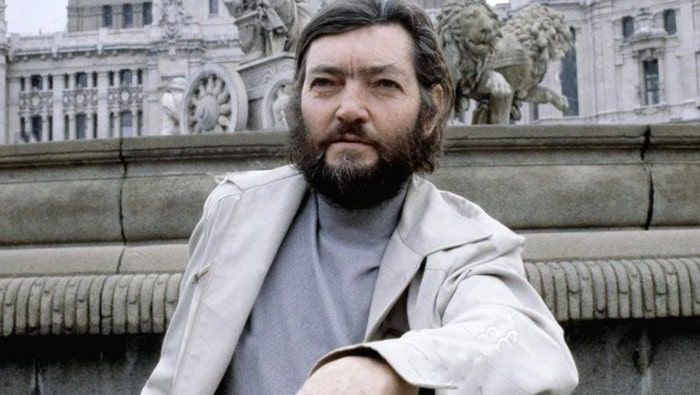Julio Cortázar or the writer who saw the world turn upside down
"Mexico is one of the countries on my list, but the years go by without me having time to visit it," Julio Cortázar.

Julio Cortázar was born in Brussels but grew up in Banfield and Agronomia. He studied literature, graduated as a teacher, went to Paris, and lived writing about "reality": the one we see, the one that hurts us, the one we call "fantastic". "My relationship with words, with writing, is no different from my relationship with the world in general. I seem to have been born not to accept things as they are given to me," wrote Julio Cortázar, perhaps unaware that those words, 106 years after his birth, define his relationship with literature and the world of the 20th century as few others.
He arrived in Buenos Aires in 1918, at the age of four. He was born in Brussels, Belgium, where his father worked as a commercial attaché at the Argentinean embassy until the outbreak of World War I forced him to settle in Switzerland. Later, Julio José Cortázar and María Herminia Descotte, decided to return to Buenos Aires. He lived first in Banfield and then in the Buenos Aires neighborhood of Agronomy, in blocks of low houses and long naps. There he learned to look with wonder and amazement at what would be a mark of much of his literary production: the fantastic nesting in everyday life.
In 1932 he obtained the title of master. Three years later he began his studies in Philosophy and Literature, which he would abandon to help his mother. During those years he also took classes and published studies on literary criticism. Under the pseudonym of Julio Denis, he published his first book, the collection of sonnets Presencia (1938). He wrote: "Our bedrooms had the living room in between, but at night you could hear anything in the house. We could hear ourselves breathing, coughing, and feeling the gesture that leads to the key of the bedside table, the mutual and frequent insomnia".
This is the beginning of "Casa tomada", perhaps his most read and reviewed story. First published in the magazine "Los anales de Buenos Aires", directed by Jorge Luis Borges, and later included in Bestiario, it tells the story of a house inhabited by two brothers that are progressively occupied by strangers that the text never reveals, as well as their motivations. The story, where the unsaid is more important than the said, was subject to multiple interpretations (a metaphor of the confusion of the owner classes in the face of the irruption of Peronism, among others) and became a synonym for how he understood literature.
In 1951, Cortázar traveled to Europe to settle in Paris, where he would live until his death. When he left Argentina he had already published his short story book Bestiario (1951). In 1963 he published Rayuela, a novel that breaks with the traditional structure of the genre since it can be read in two directions: in correlative order (from the first chapter to the last) and "jumping" between the different chapters (at the end of each chapter it is indicated which one to follow).
Rayuela was translated into about thirty languages and was an essential part of the so-called Latin American boom, this of the increase of readers of Latin American literature mainly in Europe and in which Gabriel García Márquez, Mario Vargas Llosa, and Cortázar himself participated, among other writers. Also in 1963, he traveled to Cuba to be part of a jury of the Houses of the Americas. Since then, he has had an active commitment to the Cuban Revolution, which has not deprived him of criticism of the island's government. He also accompanied the government of Salvador Allende in Chile and the Sandinista Revolution in Nicaragua.
In 1974 he was part of the Russell II International Tribunal, which reported on human rights violations in Latin America, where military dictatorships were expanding with the support of the United States, a situation that he also denounced. An amateur musician (a jazz lover) and passionate about boxing (he knew how to use it as a metaphor: "The novel always wins by points, while the story must win by knock-out"), Cortázar published 28 works (four of them posthumous), in which there are stories, novels, poetry, poetic prose, dramaturgy, and miscellany where diverse genres are crossed.
Readers from all over the world still enjoy his playful conception of literature (Final de Juego), fantasy (Historia de Cronopios y Famas), and commitment (Libro de Manuel). Also of his condition of the literary critic (Literature Classes) and translator (Complete Stories by Edgar Allan Poe). Cortázar died in Paris on February 12, 1984, a victim of leukemia. He was buried in the cemetery of Montparnasse, still not accepting things as they were given to him.

Mexico, high in Julio Cortázar's list
In the work of the Argentine author, who died on February 12, 1984, you can find references to Mexico, a country he wanted to visit since the 1950s. "Mexico is one of the countries that are on my list, but the years go by without my time to go see it," Julio Cortázar wrote in July 1954 to art critic Damián Bayón. It was in Mexico where Cortázar lived an unforgettable trip with Carol Dunlop, his last wife, in the 80s and where he found a "congregation of cronopios" in the 70s. The Argentine writer, who died on February 12, 1984, mentioned 553 times Mexico or the Mexicans in his letters, said Ricardo Bada in an article in which he made clear the interest of Cortázar in the country.
The relationship between Mexico and Cortázar began long before fame came to the Argentine author. Already in his first story, Bruja lets see his knowledge about the country by mentioning the music of Pedro Vargas and Elvira Ríos. Of course, it was not the only text where he referred to the nation. Undoubtedly, his most 'Mexican' tale is Axolotl, the Nahuatl name of the aquatic creature that in Spanish is called ajolote. The fascination of Cortázar for the animal, which is capable of self-regenerating limbs of his body that were amputated, became evident thanks to this text. "There was a time when I thought a lot about the axolotl. I went to see them at the Jardin des Plantes aquarium and I spent hours looking at them, observing their immobility, their dark movements. Now I am an axolotl ", says his story at the beginning.
In the night face up the Aztecs persecute the protagonist. Perhaps it was in this story that the author expressed his interest in that culture, something he had already spoken about when he wrote "I would like to be able to appreciate for myself if everything I have been told about Mexico is true: from the Aztec pyramids to the popular poetry. I will probably leave next year (unless there is a miracle that enables me to leave tomorrow or last). " The meeting of Cortázar with Mexico was postponed until the 70s. In 1975 he participated in the Mexican capital in a session of the International Commission that investigated the crimes of the Military Junta of Chile. He also offered some lectures.
During that trip, he visited places like Oaxaca, Montealbán, and Palenque. "From Oaxaca, I had been told many things, tourist and ethnographic, climatic and gastronomic; What no one told me is that there, in addition to a socle that is still my favorite in Mexico, I would have to find the densest congregation of cronopios ever assembled on the planet except Stockholm." He returned to Mexico in 1979 and the following year he spent two months in Zihuatanejo with Carol Dunlop.
"Our final trip through Mexico was very beautiful. We combined rented cars with local planes to travel to different parts of the territory, and in two weeks we could see a lot of beautiful things. I already knew part of that, but Carol was the first time I came to Mexico, so it was very nice to show her cities, ruins, and landscapes; then we went to other places that I did not know, and then the pleasure was even greater, "Cortázar wrote to his mother in August 1980. The last time Julio Cortázar visited Mexico was in 1983. Carol had already died and Cortázar would die only a few months later.




